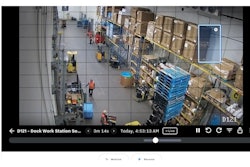
With so many options available, many fleets struggle with making the right technology decision.
However, by following a measured process you can be assured of getting the right technology to meet your needs.
Step 1: Identify your need.
Ask yourself the obvious questions. What can we be doing more efficiently? What can we do to have better visibility? What specific problem are we trying to solve?
Once you have identified your goals, you can begin determining if technology even is the right solution; is this something that can, or should be, solved with technology? Don't go looking for a problem just because there is a technology tool out there to solve it. You want to make sure you are evaluating a technology, or process, that will solve an existing specific problem within your organization.
Step 2: Have a solid set of core requirements.
Too often people “over-spec” when it comes to solutions by getting away from the core features they really need the technology to contain. Focus on your core requirements and make certain the technology meets your standard operating procedures in addition to your business, analytical and team requirements.
Step 3: Look past the bright colors and shiny user interface.
It is easy to get caught up in all the “cool” features of a technology solution. Focus on your goal and prioritize addressing those core features you truly need. The excess features and surface polish will offer little to no value if ultimately your objectives are not met.
Step 4: Clearly identify who this solution is going to serve.
Is this solution going to serve the drivers, technicians, corporate officers, internal customers, your customers or even your customers’ customers? Cleary identify who the targeted “customer” will be in the end.
Step 5: Involve as many stakeholders as feasible. Ask yourself who is going to be affected by the solution. Which departments? Is it going to impact managers? Is it going to affect your technicians? What about your drivers?
Instead of purchasing and deploying a solution on an team unsuspectedly, get the stakeholders involved in the decision-making process so they can help you understand how the technology will not only effect their job tasks, but also what some of the pitfalls of the technology might be from their point of view.
Make sure to discuss things like how much time it will take to use the technology, how complex the interaction with the technology will be, are there server requirements that you need to be aware of, etc. You want to make sure the technology will not have unintended consequences for any of your teams that will ultimately need interact with it.
Step 6: Determine if it helps the many or the few.
When deploying a solution, consider if it benefits only a small percentage of the company while at the same time shifting the burden to other areas of the organization. If it helps only one department or team, but adds multiple steps and requirements to all others, is it really a sensible solution? You need to focus on solutions that are best for the many.
Step 7: Determine how much time it will take to implement the solution and how complex that implementation will be.
You need to understand the intricacies of the implementation process and have a solid implementation plan in place. You need to be realistic about time to implementation. Will it take a month? Three months? A year? Or is it going to take countless years and resources?
What other systems will it need to integrate into? Are your partners who need to integrate with the solution in a position to do so? Can you commit the internal dedicated resources to ensure program success? Be sure to develop and communicate an implementation plan identifying program managers, stakeholders, vendor responsibilities and realistic timelines. Spending significant time on this step is crucial.
Step 8: Address the return on investment.
At some point, no matter how great the technology is, you have to address its potential ROI. Is the technology truly going to pay for itself? When determining ROI, you need to look at not only direct costs but indirect ones as well. For example, will the new technology mean more or less work for your employees?
Let’s say you invest in a technology that helps with daily route planning. You may actually be getting a better solution, but is the technology putting more of a burden on your dispatchers, drivers, technicians or managers? Does managing the tool actually slow down the current process? Is your staff capable of operating the tool, or do you need to hire additional employees who are experienced with it?
When it comes to selecting a technology solution, make sure you see the whole picture and have done all the ground work before deciding it's a sensible investment. The key to selecting the right technology is do the initial work, get stakeholders involved, understand specifically what the technology does and does not do, define who the technology will be serving, determine if you are helping the many or the few and be certain the ROI makes sense.
Tom Poduch heads the logistics engineering and technology team for Transervice Logistics Inc. Poduch has been a logistics industry professional for more than 27 years serving in a wide range of roles from fleet maintenance, warehousing, field-based technology deployment, logistics engineering and consulting.














